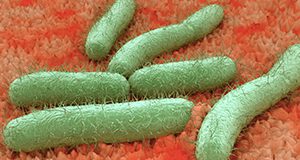Ingesting foods contaminated with Bacillus cereus bacteria can lead to nausea, vomiting, abdominal cramps, and diarrhea. Though B. cereus is commonly found in many types of fresh and processed foods, proper cooking, handling, and storage can minimize the risk of contamination. This 5-page fact sheet explains how B. cereus is transmitted, what foods it is commonly associated with, the methods used to prevent contamination, and good practices for receiving, handling, processing, and storing food. Written by Keith R. Schneider, Renée Goodrich Schneider, Rachael Silverberg, Ploy Kurdmongkoltham, and Bruna Bertoldi, and published by the Department of Food Science and Human Nutrition.
http://edis.ifas.ufl.edu/fs269
Tag: Keith R. Schneider
Preventing Foodborne Illness: E. coli O157:H7
This seven-page fact sheet discusses the common foodborne pathogen E. coli O157:H7, especially as it concerns food handlers, processors and retailers. Written by Keith R. Schneider, Renée Goodrich Schneider, Ploy Kurdmongkoltham, and Bruna Bertoldi and published by the Food Science and Human Nutrition Department.
http://edis.ifas.ufl.edu/fs097
Preventing Foodborne and Non-foodborne Illness: Vibrio vulnificus
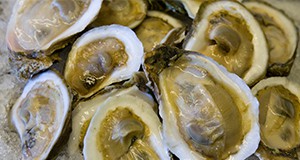 Vibrio vulnificus occurs naturally in warm brackish and saltwater environments. During the warmer months, this bacterium can reach particularly high concentrations in filter-feeding shellfish that inhabit coastal waters. Foodborne illness from V. vulnificus is almost exclusively associated with consumption of raw oysters. This 3-page fact sheet is a major revision that discusses risk of infection, times to seek medical treatment, symptoms, activities related to illness, foods commonly associated with the bacterium, handling and storage of seafood and shellfish, and methods of prevention. Written by Anita C. Wright, Renée M. Goodrich, Michael A. Hubbard, and Keith R. Schneider, and published by the UF Food Science and Human Nutrition Department. Original publication date: July 2009. Revised October 2015.
Vibrio vulnificus occurs naturally in warm brackish and saltwater environments. During the warmer months, this bacterium can reach particularly high concentrations in filter-feeding shellfish that inhabit coastal waters. Foodborne illness from V. vulnificus is almost exclusively associated with consumption of raw oysters. This 3-page fact sheet is a major revision that discusses risk of infection, times to seek medical treatment, symptoms, activities related to illness, foods commonly associated with the bacterium, handling and storage of seafood and shellfish, and methods of prevention. Written by Anita C. Wright, Renée M. Goodrich, Michael A. Hubbard, and Keith R. Schneider, and published by the UF Food Science and Human Nutrition Department. Original publication date: July 2009. Revised October 2015.
http://edis.ifas.ufl.edu/fs147
Preventing Foodborne Illness: Typhoid Fever: Salmonella Typhi
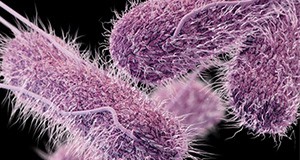
Typhoid fever is a blood infection caused by the consumption of food or water contaminated with the bacterium Salmonella enterica.Typhoid fever is easily controlled and relatively uncommon in the United States, but an estimated 21.5 million people per year are affected by typhoid fever in developing nations including regions in Asia, Africa, and South America. Many of the cases of typhoid fever in the United States are acquired through international travel to these regions. This four-page fact sheet explains the causes and symptoms of typhoid fever, as well as describing who is at risk, what foods have commonly been associated with typhoid fever, and how to implement certain sanitation methods to prevent the spread of typhoid fever. Written by Keith R. Schneider, Renée Goodrich Schneider, and Rachael Silverberg, and published by the Food Science and Human Nutrition Department.
http://edis.ifas.ufl.edu/fs125
Preventing Foodborne Illness: Campylobacteriosis

Campylobacteriosis is a gastrointestinal infection caused by bacteria of the genus Campylobacter. These bacteria require low levels of oxygen to survive and have been found in wild birds, poultry, pigs, cattle, domesticated animals, unpasteurized milk, produce, and contaminated water. A part of a series on preventing foodborne illness, this five-page fact sheet describes the Campylobacter bacteria, the causes and symptoms of campylobacteriosis disease, and how to prevent the disease through good sanitation methods and practices for receiving, handling, processing, and storing food products. Written by Soohyoun Ahn, Renée M. Goodrich-Schneider, Rachael Silverberg, and Keith R. Schneider, and published by the Food Science and Human Nutrition Department.
http://edis.ifas.ufl.edu/fs098
The Cost of Food Safety
 This new publication discusses the costs and long-term benefits associated with the implementation of food safety programs. This 5-page fact sheet covers the history of HACCP, costs associated with the application of food safety programs, reasons to improve food safety, and the financial impact of foodborne illnesses. Written by Annelys Hessing, Renée Goodrich Schneider, Alan Gutierrez, Rachael Silverberg, Michael S. Gutter, and Keith R. Schneider, and published by the UF Department of Food Science and Human Nutrition, October 2015.
This new publication discusses the costs and long-term benefits associated with the implementation of food safety programs. This 5-page fact sheet covers the history of HACCP, costs associated with the application of food safety programs, reasons to improve food safety, and the financial impact of foodborne illnesses. Written by Annelys Hessing, Renée Goodrich Schneider, Alan Gutierrez, Rachael Silverberg, Michael S. Gutter, and Keith R. Schneider, and published by the UF Department of Food Science and Human Nutrition, October 2015.
http://edis.ifas.ufl.edu/fs270
Food Safety within the Household: Risk Reduction

Food poisoning is common in the United States. The CDC estimates that 48 million Americans acquire foodborne illness every year, many of which were attributed to food preparation occurring in private homes. In 2013, the top five identified bacterial and viral causes of food poisoning attributed to home food preparation were Salmonella, norovirus, shiga-toxin-producing Escherichia coli, Clostridium perfringens, and Campylobacter. This six page fact sheet outlines the most common food-safety handling mistakes, which are improper food storage, inadequate cooking or reheating temperatures, cross-contamination, and infected food handlers. Written by Lucianna Grasso, Rachael Silverberg, George L. Baker, Renée M. Goodrich-Schneider, and Keith R. Schneider, and published by the Food Science and Human Nutrition Department.
http://edis.ifas.ufl.edu/fs195
Preventing Foodborne and Non-foodborne Illness: Vibrio parahaemolyticus
 Vibrio parahaemolyticus is a naturally occurring bacterium that inhabits coastal brackish marine waters throughout the world and is commonly found in the United States and Canada. If ingested in sufficient numbers, this bacterium can cause illness such as gastroenteritis with symptoms such as cramps, vomiting, and nausea. Illnesses linked with this organism are usually associated with the consumption of raw or improperly cooked seafood, particularly raw oysters. This 3-page fact sheet is a major revision that discusses Vibrio parahaemolyticus, illness caused by the bacterium, factors that increase risk of infection, methods of infection, seafood and shellfish handling recommendations, and prevention. Written by Anita C. Wright, Renée M. Goodrich, Michael A. Hubbard, and Keith R. Schneider, and published by the UF Department of Food Science and Human Nutrition. Original publication date: July 2009. Revised October 2015.
Vibrio parahaemolyticus is a naturally occurring bacterium that inhabits coastal brackish marine waters throughout the world and is commonly found in the United States and Canada. If ingested in sufficient numbers, this bacterium can cause illness such as gastroenteritis with symptoms such as cramps, vomiting, and nausea. Illnesses linked with this organism are usually associated with the consumption of raw or improperly cooked seafood, particularly raw oysters. This 3-page fact sheet is a major revision that discusses Vibrio parahaemolyticus, illness caused by the bacterium, factors that increase risk of infection, methods of infection, seafood and shellfish handling recommendations, and prevention. Written by Anita C. Wright, Renée M. Goodrich, Michael A. Hubbard, and Keith R. Schneider, and published by the UF Department of Food Science and Human Nutrition. Original publication date: July 2009. Revised October 2015.
http://edis.ifas.ufl.edu/fs146
Preventing Foodborne Illness: Bacillus cereus
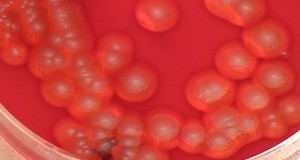
Ingesting foods contaminated with Bacillus cereus bacteria can lead to nausea, vomiting, abdominal cramps, and diarrhea. Though B. cereus is commonly found in many types of fresh and processed foods, proper cooking, handling, and storage can minimize the risk of contamination. This 5-page fact sheet explains how B. cereus is transmitted, what foods it is commonly associated with, the methods used to prevent contamination, and good practices for receiving, handling, processing, and storing food. Written by Keith R. Schneider, Renée Goodrich Schneider, and Rachael Silverberg, and published by the UF Department of Food Science and Human Nutrition, August 2015.
http://edis.ifas.ufl.edu/fs269
Preventing Foodborne Illness: Norovirus

If you have ever had the stomach flu, norovirus was likely the culprit. Norovirus is the most common cause of foodborne illness in the United States and is transmitted through direct person-to-person contact or contaminated objects and food. This 5-page fact sheet covers how norovirus is spread, foods associated with norovirus, symptoms of infection, who is at risk, as well proper sanitation methods for preventing the spread of norovirus. Written by Rachael Silverberg, Melissa K. Jones, Renée Goodrich Schneider, Aswathy Sreedharan and Keith R. Schneider, and published by the UF Food Science and Human Nutrition Department, June 2015.
http://edis.ifas.ufl.edu/fs129
Health Benefits and Medicinal Value of Honey
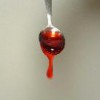 Honey has been used for medicinal purposes for thousands of years. It is rich in sugars such as glucose and fructose, but it also contains small amounts of vitamins, minerals, amino acids, and antioxidants such as phenolic acids and flavonoids. These nutrients help to make honey a unique, natural health product. Its market niche as a health product is growing, and current research supports the potential of honey as a medicinal product. This 3-page fact sheet describes health aspects of honey deriving from the floral source and color, beneficial compounds, anti-microbial properties and anti-inflammatory properties. Written by Sara Marshall, Liwei Gu, and Keith R. Schneider, and published by the UF Department of Food Science and Human Nutrition, April 2015.
Honey has been used for medicinal purposes for thousands of years. It is rich in sugars such as glucose and fructose, but it also contains small amounts of vitamins, minerals, amino acids, and antioxidants such as phenolic acids and flavonoids. These nutrients help to make honey a unique, natural health product. Its market niche as a health product is growing, and current research supports the potential of honey as a medicinal product. This 3-page fact sheet describes health aspects of honey deriving from the floral source and color, beneficial compounds, anti-microbial properties and anti-inflammatory properties. Written by Sara Marshall, Liwei Gu, and Keith R. Schneider, and published by the UF Department of Food Science and Human Nutrition, April 2015.
http://edis.ifas.ufl.edu/fs267
Preventing Foodborne Illness: Cyclospora cayetanensis
 Cyclospora cayetanensis is a microscopic, spore-forming, intestinal protozoan parasite and a known cause of the gastrointestinal infection cyclosporiasis, often referred to as “traveler’s diarrhea” for its prevalence among visitors to regions where the species is endemic. These organisms have a protective covering that makes them resistant to disinfectants and that gives Cyclospora the ability to survive outside of hosts for extended periods. The incidence of cyclosporiasis has been increasing worldwide, with several documented cases in the United States and Canada. This 4-page fact sheet was written by Keith R. Schneider, Rachael Silverberg, Susie Richardson, and Renée Goodrich Schneider, and published by the UF Department of Food Science and Human Nutrition, March 2015. (Photo: CDC/DPDx – Melanie Moser)
Cyclospora cayetanensis is a microscopic, spore-forming, intestinal protozoan parasite and a known cause of the gastrointestinal infection cyclosporiasis, often referred to as “traveler’s diarrhea” for its prevalence among visitors to regions where the species is endemic. These organisms have a protective covering that makes them resistant to disinfectants and that gives Cyclospora the ability to survive outside of hosts for extended periods. The incidence of cyclosporiasis has been increasing worldwide, with several documented cases in the United States and Canada. This 4-page fact sheet was written by Keith R. Schneider, Rachael Silverberg, Susie Richardson, and Renée Goodrich Schneider, and published by the UF Department of Food Science and Human Nutrition, March 2015. (Photo: CDC/DPDx – Melanie Moser)
http://edis.ifas.ufl.edu/fs130
Food Safety for the Holiday Season
 Food is always an important part of holiday festivities, but holiday meals can take a turn for the worse if food safety is not properly practiced when preparing and cooking the food. The food you serve your family and friends can be very harmful if your turkey, ham, or home-prepared meat products are not appropriately handled. The good news is that by practicing four basic food safety measures you can help prevent foodborne illness over the holiday season. This 6-page fact sheet provides information about safe food practices for the holidays. Written by Soohyoun Ahn and Keith R. Schneider, and published by the UF Department of Food Science and Human Nutrition, December 2014. (Photo: Stockbyte/Thinkstock)
Food is always an important part of holiday festivities, but holiday meals can take a turn for the worse if food safety is not properly practiced when preparing and cooking the food. The food you serve your family and friends can be very harmful if your turkey, ham, or home-prepared meat products are not appropriately handled. The good news is that by practicing four basic food safety measures you can help prevent foodborne illness over the holiday season. This 6-page fact sheet provides information about safe food practices for the holidays. Written by Soohyoun Ahn and Keith R. Schneider, and published by the UF Department of Food Science and Human Nutrition, December 2014. (Photo: Stockbyte/Thinkstock)
http://edis.ifas.ufl.edu/fs260
Preventing Foodborne Illness: Clostridium botulinum
 Clostridium botulinum is ubiquitous in nature, often found in soil and water. The bacteria and spores alone do not cause disease, but they produce the botulinum toxin that causes botulism, a serious paralytic condition that can lead to death. Although it is one of the least common of the foodborne diseases, anyone is susceptible even with the ingestion of only a small amount of toxin present in contaminated food. Immunocompromised individuals, young children, and elderly individuals may suffer from more serious symptoms. This 6-page fact sheet was written by Keith R. Schneider, Rachael Silverberg, Alexandra Chang and Renée Goodrich Schneider, and published by the UF Department of Food Science and Human Nutrition, December 2014.
Clostridium botulinum is ubiquitous in nature, often found in soil and water. The bacteria and spores alone do not cause disease, but they produce the botulinum toxin that causes botulism, a serious paralytic condition that can lead to death. Although it is one of the least common of the foodborne diseases, anyone is susceptible even with the ingestion of only a small amount of toxin present in contaminated food. Immunocompromised individuals, young children, and elderly individuals may suffer from more serious symptoms. This 6-page fact sheet was written by Keith R. Schneider, Rachael Silverberg, Alexandra Chang and Renée Goodrich Schneider, and published by the UF Department of Food Science and Human Nutrition, December 2014.
http://edis.ifas.ufl.edu/fs104
Genetically Modified Food
 A food is considered genetically modified when its genetic makeup is altered in some way as a result of the use of recombinant DNA biotechnological procedures. These changes result in the expression of attributes not found in the original. Examples include delayed-ripening tomatoes and pest-resistant or herbicide-tolerant crops. Genetic modification can be used to improve crop yields, reduce insecticide use, or increase the nutritional value of foods. This 5-page fact sheet answers questions consumers might have about genetically modified food. Written by Keith R. Schneider, Renée Goodrich Schneider, and Susanna Richardson, and published by the UF Department of Food Science and Human Nutrition, November 2014. (Photo: iStock/Thinkstock.com)
A food is considered genetically modified when its genetic makeup is altered in some way as a result of the use of recombinant DNA biotechnological procedures. These changes result in the expression of attributes not found in the original. Examples include delayed-ripening tomatoes and pest-resistant or herbicide-tolerant crops. Genetic modification can be used to improve crop yields, reduce insecticide use, or increase the nutritional value of foods. This 5-page fact sheet answers questions consumers might have about genetically modified food. Written by Keith R. Schneider, Renée Goodrich Schneider, and Susanna Richardson, and published by the UF Department of Food Science and Human Nutrition, November 2014. (Photo: iStock/Thinkstock.com)
http://edis.ifas.ufl.edu/fs084
Outbreaks of Foodborne Illness Associated with Melons
 Despite the manner in which they are prepared, melons are commonly consumed raw without a processing step which would eliminate pathogenic bacteria. For those concerned about the safety of melons, including cantaloupe, honeydew, and watermelon, this 6-page fact sheet lists outbreaks associated with melons in the United States, Canada, and Europe, along with information about the location, pathogen, and incidence of illness. Written by Michelle D. Danyluk, Rachel McEgan, Ashley N. Turner, and Keith R. Schneider, and published by the UF Department of Food Science and Human Nutrition, November 2014. (UF/IFAS Photo by Thomas Wright)
Despite the manner in which they are prepared, melons are commonly consumed raw without a processing step which would eliminate pathogenic bacteria. For those concerned about the safety of melons, including cantaloupe, honeydew, and watermelon, this 6-page fact sheet lists outbreaks associated with melons in the United States, Canada, and Europe, along with information about the location, pathogen, and incidence of illness. Written by Michelle D. Danyluk, Rachel McEgan, Ashley N. Turner, and Keith R. Schneider, and published by the UF Department of Food Science and Human Nutrition, November 2014. (UF/IFAS Photo by Thomas Wright)
http://edis.ifas.ufl.edu/fs258
Food Safety at Tailgating
 While tailgating can be a great fun for family and friends, you need to make plans and take on-site precautions to keep your food safe during these events. Since refrigerators and running water are not always available for the events, you should familiarize yourself with the safe food handling practices for these outdoor events and plan ahead so you will be prepared with enough coolers/ice and all the tools you need to keep and cook your food safely. This 3-page fact sheet provides information on safe food practices for tailgating and other outdoor sporting events. Written by Soohyoun Ahn, Amarat H. Simonne, and Keith R. Schneider, and published by the UF Department of Food Science and Human Nutrition, October 2014.
While tailgating can be a great fun for family and friends, you need to make plans and take on-site precautions to keep your food safe during these events. Since refrigerators and running water are not always available for the events, you should familiarize yourself with the safe food handling practices for these outdoor events and plan ahead so you will be prepared with enough coolers/ice and all the tools you need to keep and cook your food safely. This 3-page fact sheet provides information on safe food practices for tailgating and other outdoor sporting events. Written by Soohyoun Ahn, Amarat H. Simonne, and Keith R. Schneider, and published by the UF Department of Food Science and Human Nutrition, October 2014.
http://edis.ifas.ufl.edu/fs256
The Food Safety Modernization Act of 2011 – Proposed Rule for Preventive Controls for Human Food
 The Food Safety Modernization Act (FSMA), which was signed into law by President Obama on January 4, 2011, is the most sweeping reform of food safety laws in more than 70 years since the enactment of the Federal Food, Drug and Cosmetic Act of 1938. High-profile foodborne outbreaks in the last decade and their impact on public health and the economy have exposed the need for a new, modern food safety system. FSMA aims to ensure the safety and security of the US food supply by focusing on preventing food safety problems rather than responding after they occur. This law provides the FDA with new enforcement authorities to achieve a higher rate of compliance with food safety standards and to respond better to problems. This 5-page fact sheet was written by Soohyoun Ahn, Keith R. Schneider, Michelle D. Danyluk, and Renee Goodrich-Schneider, and published by the UF Department of Food Science and Human Nutrition, April 2014.
The Food Safety Modernization Act (FSMA), which was signed into law by President Obama on January 4, 2011, is the most sweeping reform of food safety laws in more than 70 years since the enactment of the Federal Food, Drug and Cosmetic Act of 1938. High-profile foodborne outbreaks in the last decade and their impact on public health and the economy have exposed the need for a new, modern food safety system. FSMA aims to ensure the safety and security of the US food supply by focusing on preventing food safety problems rather than responding after they occur. This law provides the FDA with new enforcement authorities to achieve a higher rate of compliance with food safety standards and to respond better to problems. This 5-page fact sheet was written by Soohyoun Ahn, Keith R. Schneider, Michelle D. Danyluk, and Renee Goodrich-Schneider, and published by the UF Department of Food Science and Human Nutrition, April 2014.
http://edis.ifas.ufl.edu/fs248
Dealing with Food Allergies
 A food allergy is an immune system reaction that happens after a person consumes what is normally considered a safe food. Food allergies occur more often in children than in adults: 4%–8% of those aged 4 or under and about 2% of adults are affected. Allergic reactions from food have led to over 20,000 emergency room visits per year. Annually, between 150 and 200 fatalities associated with food allergic reactions occur in the United States. This 4-page fact sheet was written by Keith R. Schneider, Renée Goodrich Schneider, Soohyoun Ahn, and Susie Richardson, and published by the UF Department of Food Science and Human Nutrition, January 2014.
A food allergy is an immune system reaction that happens after a person consumes what is normally considered a safe food. Food allergies occur more often in children than in adults: 4%–8% of those aged 4 or under and about 2% of adults are affected. Allergic reactions from food have led to over 20,000 emergency room visits per year. Annually, between 150 and 200 fatalities associated with food allergic reactions occur in the United States. This 4-page fact sheet was written by Keith R. Schneider, Renée Goodrich Schneider, Soohyoun Ahn, and Susie Richardson, and published by the UF Department of Food Science and Human Nutrition, January 2014.
http://edis.ifas.ufl.edu/fs123
Preventing Foodborne Illness Associated with Clostridium perfringens
 This is one in a series of fact sheets discussing common foodborne pathogens of interest to food handlers, processors, and retailers. This 5-page fact sheet was written by Keith R. Schneider, Renée Goodrich-Schneider, Michael A. Hubbard, and Susanna Richardson, and published by the UF Department of Food Science and Human Nutrition, January 2014.
This is one in a series of fact sheets discussing common foodborne pathogens of interest to food handlers, processors, and retailers. This 5-page fact sheet was written by Keith R. Schneider, Renée Goodrich-Schneider, Michael A. Hubbard, and Susanna Richardson, and published by the UF Department of Food Science and Human Nutrition, January 2014.
http://edis.ifas.ufl.edu/fs101
